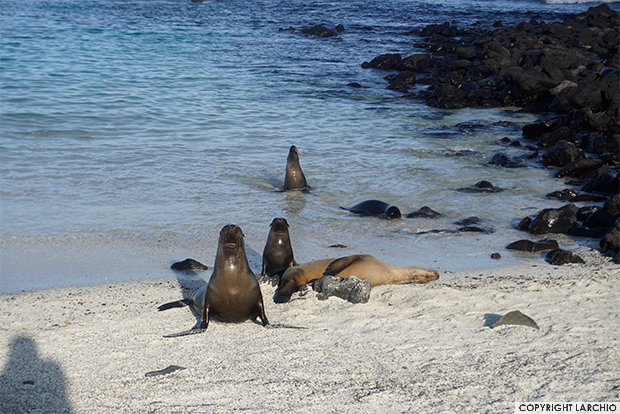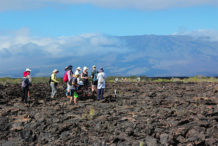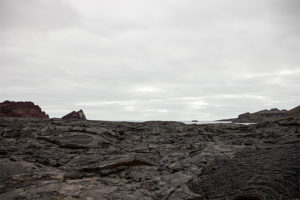Luxury Cruises to Galapagos Islands
Seeking the best rated Galapagos tour operator? Take a trip with GalapagosInformation.com. Recommended in LonelyPlanet. Get the ultimate traveling experience of your life. The top rated service, many choices, high level rooms, trained guides. All Inclusive tours, every week of the year. Book right now. Luxury Cruises to Galapagos Islands.
Travel to Galapagos Islands Ecuador is actually an unquestionable tropical paradise, some of the more remarkable wildlife around the world is located in the Galapagos Islands. A vacation to the Galapagos would be the visit of their lifetime for many guests. The wildlife in Galapagos you will see can’t be found somewhere else, but in this place sea and land wildlife and birds are friendlier.
You will find Boobies, giant tortoises, iguanas and many others, will be observed truly nearby throughout your excursions. If you want scuba diving or snorkeling, sea lions will be trying to play with you and beneath them, turtles and could be encounter.
Galapagos Islands Weather
The Galapagos Islands, found on the Pacific Ocean, about a thousand kilometers west of Ecuador, have a very particular weather, tropical and semi-arid, which has an incredibly hot and relatively stormy season through January to May, along with a cool and dry period, but also cloudy and misty, through July to November.
The landscapes of the Galapagos are dry, with the exception of the bigger islands, which usually receive more considerable rain fall. As was already noted by Charles Darwin, who as you may know observed the details of the species living in the isles, their weather conditions are less hot than one could assume from a location positioned at the Equator, as a result of Humboldt Current, which usually reaches the area right after running in the ocean west of South America. In any case, here the weather is not the same from one year to the other, since there are completely different sea currents which encounter or take turns in the region (additionally there is a hot current from Central America, that flows at a little range and is extra active in the periods El Niño), meaning that the weather conditions are difficult to forecast.
As said before, in these island destinations there is two seasons: a hot season from January to May, with maximum temperature ranges close to 29/30 °C (84/86 °F), as well as a relatively cool period from July to November, called Garua, having day temperature ranges around 24/25 °C (75/77 °F). In the latter, evening temperature conditions remain favorable, approximately 18/19 °C (64/66 °F), although you will find often mists, which result in the condensation of tiny drops (called garua by which the season takes its name), and the sky is frequently covered by very low clouds (because of the thermal inversion produced by the low-temperature marine current). This time is the least rainy of the entire year in coasts and plains (because the Garua does not generate significant rain accumulations), though away from the coast hills and mountains, there might be quite a few tremendous rains. The top peak is the Vulcan Lobo, 1,707 meters (5,600 feet) high, situated on Isabela Island.

The warm season, from January to May, is on the other hand the rainiest period, but normally the rains usually are not abundant, and in any kind of event they happen in the form of morning showers, that do not overshadow in excess the sunlight. The rainiest month is March.
On the shorelines, the rainfall amounts to lower than 600 millimeters (20 inches) a year, so it’s in no way copious. This is the typical precipitation in Puerto Baquerizo; we can easily notice the fact that in the hot season, only a few millimeters (a few tenths of an inch) per month accumulate, because of mainly to drizzle and dew configuration.
Nevertheless, people head to the beaches through the rainy period, because in addition to being the sunniest, it is the one in that the water is the most warm.
When you should go Generally speaking, the Galapagos may be visited all year round. However, the perfect time to travel to Galapagos, if you also desire to swim and also sunbathe, runs from February to May, because it’s the hottest and sunniest, though there might be many downpours or thunderstorms in the evening.
The cool season, from July to November, can be recommended to explore nature, since it rarely rains on the plains and the temperature is pleasurable, even when you need to take into account mists, haze and cloudy air. From September to November the sea could be a little tough, and this can disturb those that have problems with movement sickness, during catamaran travels from one isle to the next.
What clothes you should pack
From December to May (hot period): light outfits, a lightweight sweatshirt for the night time, light raincoat or umbrella for rain showers; sun hat (after all, we’re at the Equator). For walking in inland hills and the Vulcan Wolf, a bit warmer sweatshirt and raincoat, trekking footwear.
From June to November (cold season): light outfits, sweatshirt and lightweight coat for the night.
For the ocean, equipment for snorkeling, water shoes or rubber soled footwear.
Galapagos Islands Cruise Itineraries
Every licensed vessel sailing the Galapagos follows a 15-day path established and approved by Galapagos National Park. Throughout that period, a boat might not visit the same site twice, with the exclusion of the Charles Darwin Research Station on Santa Cruz. How lines section the 15 times may vary, but four-, five- and eight-day options are the standard. Passengers can often combine these sections into 11-, 12- and 15-day cruises.
All boats basically follow the same protocol, regardless of itinerary: Island visits and extra-curricular tasks are done throughout the day, and the majority of navigation is performed immediately.
All cruises start or end at one of two islands with a airport: Baltra, a U.S. military outpost during WWII turned Ecuadorian air base, or San Cristobal, the Galapagos’ second most populated island and home to the capital of their province, Puerto Baquerizo Moreno.
Because the approach to cruising continues to be standardized, choosing the proper itinerary has a whole lot to do with cruisers deciding which visitor websites are in their must-visit lists. Port research — especially photo searching — is key. Keep in mind that the longer the cruise, the further west the ship will reach. That’s not to mention the western islands are better — it is a matter of personal taste. If you rail is also an important factor.
There’s one major exception: “Live aboard” ships carrying seasoned sailors are the only craft to see the northern islands, Darwin and Wolf, prime places for ski lovers. In Darwin, where there’s no landing website, schools of hammerheads are known to congregate.
Most passengers will at least spend a day or two exploring Quito or Guayaquil pre or post-cruise. It is basically necessary, provided the flight logistics.
Plan ahead in the event that you want to visit during the high season. Visiting outside of those periods will still offer plenty of adventures and wildlife experiences, but costs might be lower with fewer other tourists around.
With little variation in air and water temperatures throughout the year, and numerous species that aren’t migratory, an Isabela Island cruise is an excellent adventure at any time. Generally, but the waters are better between January and March, which makes this a perfect time for avid snorkeling enthusiasts. The driest months are typically between August and December, ideal for beach lovers.
Visit the Galapagos in January to watch green sea turtles coming and laying eggs on the beaches, and in April to find the eggs. July is the prime month for visiting whales off the western coast of Isabela Island. Bird spotters will likely prefer to visit Isabela Island between August and March, when the range of migratory birds is at its peak. October is the mating period for fur seals, whilst brown nodes are active in November. December is the best month if you want to see the hatching of giant tortoises.
Before joining any Galapagos cruises, you will first need to create your strategy to mainland Ecuador. International flights generally arrive in the nation’s capital city of Quito, though it is also possible to take an overseas flight to Guayaquil. Flights to the Galapagos Islands leave every day from the Quito and Guayaquil.
Baltra Island gets the biggest airport around the Galapagos Islands, however flights arrives too at San Cristobal Island. Your tour operator will normally organize transfers from the airport for your cruise departure point from Baltra or by San Cristobal. Isabela Island cruises generally leave from Puerto Ayora, a significant port on Santa Cruz Island.
Galapagos Animals
The Galapagos penguin is the sole available in the northern hemisphere and to breed in the tropics.
A Galapagos tortoise can weigh around 595lb (270kg) with a carapace of 4ft (1.2m) and outlive most people.
The endemic Galapagos fur sea lions are the smallest among the world’s seven species of fur sea lions
The Galapagos Islands are home to the world’s biggest cormorant and the only one struggling to fly.
Galapagos has among the world’s rarest ecosystems where the herbivores on top of the food chain are reptiles.
Galapagos Swallow-tailed gulls are the only gulls in the world to feed at night .
The Galapagos boasts the world’s largest and just red-footed booby colony.
There are 23 species of reptile from the Galapagos and all but two of these are endemic to the archipelago.
The Galapagos is one of the very few areas of the world where turtles continue to be a frequent sight.
At 30cm in length and with a massive set of venomous jaws, the endemic centipede (Scolopendra galapagoensis) is among the Islands’ most feared animals.
A lichen poll in June 2010 from the Charles Darwin Foundation discovered over 60 new species in the Galapagos with a estimated ten species new to science.
GALAPAGOS CRUISES 2024
NEMO 2
| DEPARTURES | ITINERARY | AVAILABLE CABINS | SPACES | |
|---|---|---|---|---|
| There aren't available dates for the selected dates |
















